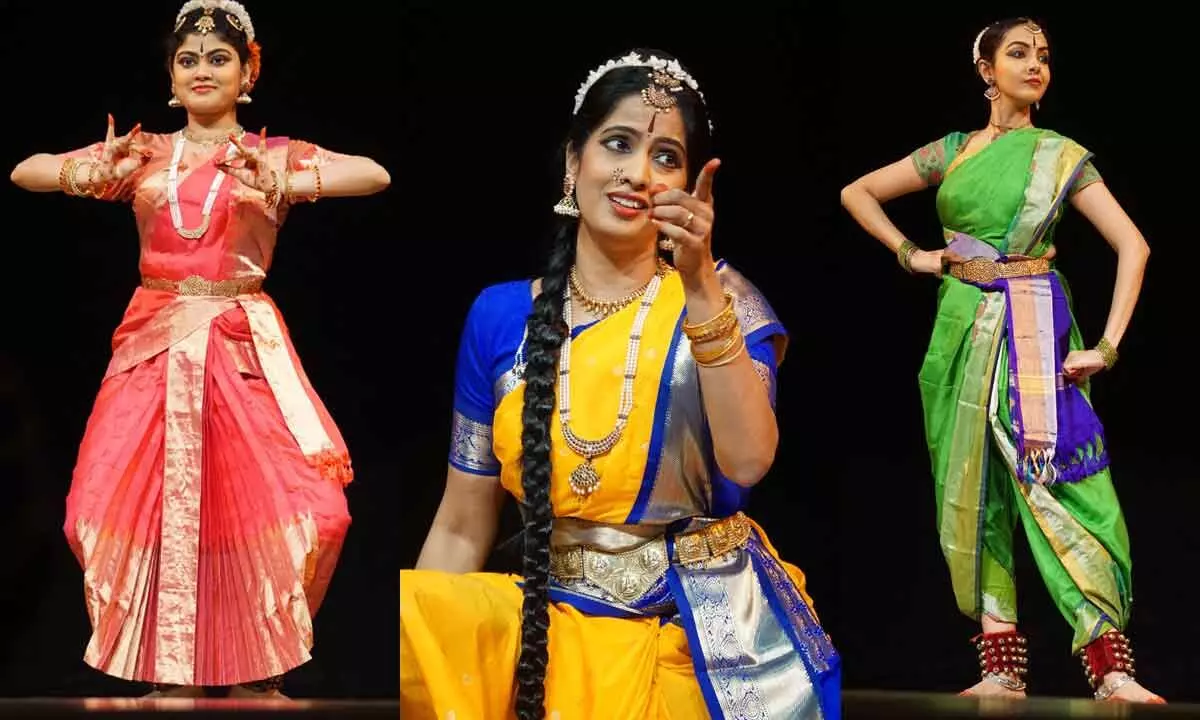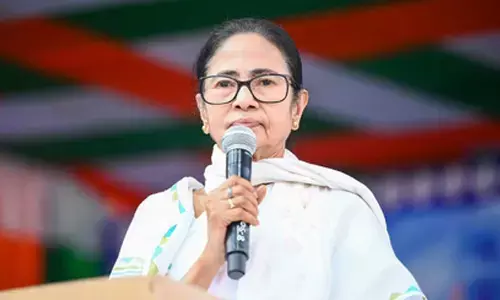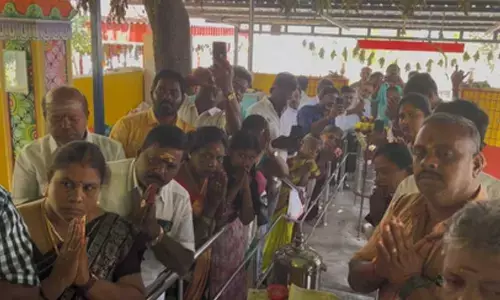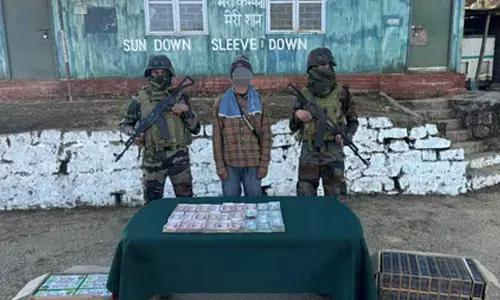Telangana Epic Literature:

A 14th Century King’s Masterpiece Brought To Light Through Dance
South Indian Cultural Association in their annual festival at Ravindra Bharathi presented a Kuchipudi dance production based on the ten Nayika Avasthas (states) described in the “Rasavarna Sudhakaram” of Ruler Poet Sarvagna Singha Bhupala. After fall of the Kakatiyas, Recherla family of Padmanayaka Velamas established the Rachakonda and Devarakonda Kingdoms in Telangana whose massive forts built from colossal monolithic rocks still remain as a reminder of vanished glory. The Venkatagiri and Jatprole Samasthanams are descended from them. This King reigned during the 14th century being highly learned, a patron of great Poets and a writer of remarkable literary works. He is also the author of “Ratna Panchalika” a drama on Lord Krishna. The former work contains profound insight into the emotional journey and stages of a woman deeply in love.
Dasakama Avasthas describing the Nayika context of Indian classical literature illustrate the nuanced progression of the Heroine’s emotions and actions, portraying the various facets of her love and yearning for her beloved in an intellectual and sophisticated manner. Dr Yashoda Thakore has creatively put together a series of solo pieces to convey the distilled essence of this exquisitely refined multifaceted Sanskrit original. She deserves appreciation for bringing to the audience a lost treasured heirloom of Telangana cultural history.
Abhilasha (Desire)-subtle schemes are orchestrated brimming with fervent desire to capture attention with unconcealed longing and careful adornment. In Javali “Apadooruku” Sampreethi with flashing eyes depicted the complaint of being undeservedly rebuked for fickleness. Her attire was a contrasting yellow with blue border.
Chinta (Contemplation) -consuming thoughts, restless demeanor, tearful eyes and aimless fidgeting show profound yearning. “Toyajakshi” by Sindhuja in beguiling jewel like sheen of emerald hued aaharya aptly transmitted the feelings of a distracted and wandering mind to perfection. Disinterested in worldly things she is forever focused on her object of affection.
Anusmriti (Reminiscence)-immersed in memorable moments with frequent sighs and introspective gaze. “Eppudugani” showed Sampreethi as Alamelumanga delicately pondering the sound of footsteps which may herald the presence of Lord Venkateswara whom she is eagerly awaiting.
Gunakirtanam (Praise)-awestruck by beauty, passionate admiration is exuded with fervour. Speech quivers with perspiring emotion. Sindhuja enacted “Cheli Nenetlu” with great skill in a sprightly tone, shades of jealousy and frustration followed as her loved one abandons her to go to another triggering passionate outbursts of feeling.
Udvega (Anxiety)-glistening tears, despair and resentment of unfulfilled yearning. In “Sakhi Prana” Sampreethi’s character vigorously depicts anger with the deceitful lover who broke his promise of reunion.
Vilapam (Lamentation)-continuous absence inspires fretful movements in hopes of fleeting glimpses. Sindhuja was winsome in “Chalu Chalu”, expressing her loneliness with consummate abhinaya and evoking her dissatisfaction when she is not able to share the joy of being with her consort.
Unmadam (Madness)-unending longing leads to dramatic mood swings, introspective silence and consuming thoughts. “Marulu Minchenura” insists- “Lord Krishna, come to me - I will not let you leave my presence”. In a soft sky-blue costume Yashoda interpreted this item strikingly. The divinely handsome Lord appears and disappears keeping her in uncertainty where she only becomes his reflection and seemingly reaches him ecstatically her thirst quenched only to realise, He is not there at all!
Vyadhi (Illness)-physical and emotional decline, Jadatha(Apathy)-an emotionless, unresponsive and desensitised state lost in an unattainable love and Marana (Death)-a final release is sought in an unbearable situation of unquenchable longing. These last states with the final one being only indicated are instanced by the Ashtapadi of Jayadeva “Savirahe”. Radha is suffering from the agony of separation; her melancholy is described by her confidante as piteous indeed. Yashoda with ease became an intensely sorrowful nayika whose character goes through all these moods lamenting her loneliness and desiring her beloved Krishna. In-between the items for greater ease of understanding Aapeksha explained lucidly the contours of the schematics and the nuances involved. The dance performance was graced by the presence of Sri Rajah Surabhi Adhitya Laxma Rao (Jatprole Samasthanam) the direct descendant of Sarvagna Singha Bhupala. SICA president Dr Chakravarthy and the organisation’s secretary Rajasekhar have to be congratulated for the meticulous program arrangement.










